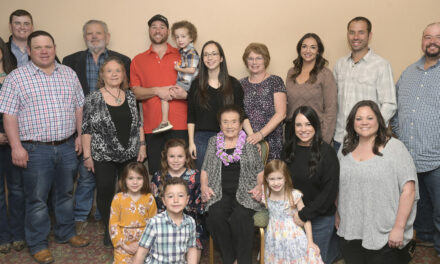August is Crayon Collection Month. After all, everybody loves new crayons. Schoolchildren want to start the year with new sets, but what about all the partially used crayons from years past?
Crayon Collection Month is dedicated to the principle that crayons, staying new for a very short time, should not be discarded just because they have some wear. Children can be taught to conserve and reuse resources, beginning with crayons.
There are many possibilities for using dulled crayons. Peel back the paper. Dedicate a handheld pencil sharpener to renewing tips. Remove the paper to color with the edges for creative effects. Smudging colored edges with an eraser can add dimension.
Shaved crayons can create interesting art. Place the flakes between sheets of waxed paper. Form two pads using an old copy of the Express newspaper or other recycled paper. Place the waxed paper with flakes between the newsprint.
Adults must supervise pressing with a warm iron. Frame the art with strips of black paper to create a stained-glass effect and display it in a window.
One purpose of Crayon Collection Month is to raise awareness among children. Their efforts can need help locally and around the world. Crayons, school supplies and clothing are necessities for academic success.
While children enjoy being artistic with used crayons, share information about other children who do not have crayons or school necessities. Ask how the children would feel without crayons or school supplies, and research ways to help.
Crayon lessons can teach about ecology and math. Each year, 69 billion crayons are made worldwide. Figure out how many crayons placed end to end would make up the earth’s circumference—24,901 miles around the equator.
More than half a million crayons are discarded annually. Dumped leftover crayons take decades to decompose. Imagine billions of crayon pieces in landfills thrown out just because the point is blunt.
Smithsonian Magazine provides crayon history. Children began enjoying crayons in the modern sense over a century ago. Childhood memories of the look, scent, and feel of wax-colored wax gliding over paper began in 1903.
Before that, feeble attempts had been made to color clay and chalk formed into sticks. The idea had appeal, but the effect was disappointing.
At the beginning of the 20th century, Binney & Smith was a small paint company known for the traditional red paint farmers used to paint their barns. It also sold lamp black and white chalk.
Binney & Smith won a prize at the 1900 Paris Exposition for displaying how to manufacture economically a true “black black.” Until that time, manufacturing carbon black was very expensive.
At the St. Louis World’s Fair in 1904, Binney & Smith won another award. This time, it had developed a dustless blackboard chalk, which helped with cleanliness in American classrooms.
As innovation leaders, the company began experimenting with coloring sticks. Alice Binney suggested the name Crayola. She combined “craie,” the French word for chalk, and “ola” meaning oily.
Interestingly, Native American reservation schools were among the first to use crayons. The United States was a huge customer of the crayon industry.
In 1958, baby boomers were delighted with the new 64-crayon pack. It was the first time crayons came with a built-in sharpener. Including silver, gold and other delightful colors, the boxes were coveted.
Today, Hallmark Cards owns the guarded Crayola trademark with the Binney & Smith brand. Children in every local neighborhood continue to create delightful art with crayons.
Help children reuse and recycle in creative ways. Remember to shop locally for crayons and other school supplies, and support home-grown businesses that appreciate our patronage. Janet Miller’s e-book, Family Prayers and Activities: Weekly Guides, is for families or prayer groups. Janet is the creator of Friends on the Way, an e-resource for churches to teach families about the Bible and discipleship. Find it at www.TeamRCIA

